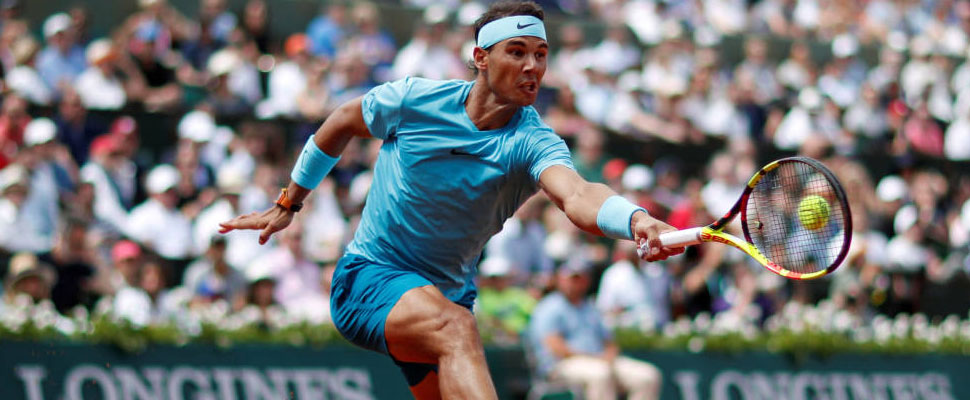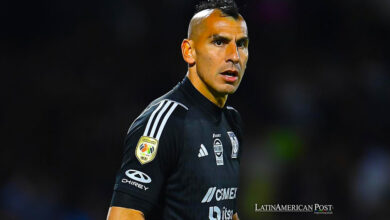Tennis: Rafael Nadal and his unprecedented historical dominance on clay
This year, the Spanish broke John McEnroe's record by winning 50 consecutive sets of brick powder

In May 2018, Rafael Nadal broke John McEnroe's record established in 49 consecutive sets won over the same surface, beating Argentina's Diego Schwartzman 6-3, 6-4 in the last 16 of the Madrid Open.
Leer en español: Tenis: Rafael Nadal y un histórico dominio sin precedentes sobre arcilla
The Spaniard not only established his mark of more than 50 consecutive sets in clay, but also eclipsed McEnroe's record in synthetic courts, which prevailed since 1984. As expected, the tennis player ended up triumphing in the Spanish capital and a few days then he did the same in Rome.
It is no secret to anyone that Nadal is the most dominant tennis player in history on brick dust, so much so that he has been nominated several times by the specialized circle to be the best of all time together with other prominent names such as Roger Federer, Bjorn Borg, Pete Sampras, John McEnroe and Novak Djokovic.
However, Nadal tries not to pay much attention to his records. In fact, in relation to the McEnroe's record, said in a post-match press conference "is circumstantial. I do not despise any record, but right now I'm not thinking about this kind of thing. When I go out to play I just think about my rival and those things are left by the end of my career. It is very difficult to win 50 straight sets. It's been done, but that's it, let's not talk about it anymore and think about what really matters to me. "
The current number 1 of the planet left behind in triumphs and marks, which was considered before its appearance, the best on clay, the Swedish Bjorn Borg. He has been crowned ten times in the Roland Garros, an unprecedented fact not only in the French tournament but in any of the four big ones in which nobody has been titled so many times. In 2005, 2006, 2007, 2008, 2010, 2011, 2012, 2013, 2014 and 2017.
Why is it so hard to beat him in brick dust? This is what rivals say
Roger Federer: According to the Punto de Break portal, Federer believes that "Rafa has always had a great advantage over me on clay, I have been trying many new things when facing him on the ground, especially with the reverse, but I always I found that I found solutions to everything I proposed".
Novak Djokovic: According to the same portal, Djokovic says that "The fact of being left-handed helps him a lot because he finds impossible angles and effects, he does new things on the track and we all know that to win a big tournament on clay, the normal thing is to beat him." Winning him at Roland Garros 2015 was very special He is the true King of clay".
Andy Murray: Point of Break records that Murray argues that "Winning against him on this surface is one of the great challenges of the sport, I am very proud to have achieved it because it really impresses to see how he moves on the track, he does not need any time to adapt to movements which are very different from the hard tracks and for which I must have patience when it comes to acclimating".
Boris Becker: "His leg movement is exceptional, he prints incredible ball effects that are even more dangerous on this surface and accumulates a confidence that makes the opponent see it impossible to beat him." I tried everything to win on clay but I did not know how to win. Really, the winner on this surface is the one who makes the least mistakes", says Becker at Punto de Break.
Who is the best tennis player in each type of court?
LatinAmerican Post reviews the achievements and legacies of other great tennis players in history, who have also been considered dominant in the three main surfaces on which this sport is played: grass, clay (clay or brick dust) and hard court.
Bjorn Borg (clay)
The former Swedish tennis player won for three consecutive years (mark still in force) the Roland Garros and Wimbledon tournaments, considered "the most difficult double in tennis". In total, the Stockholm native reached 96 tournaments (64 of the ATP), including 5 Wimbledon, 6 Roland Garros and 2 Masters before retiring at 26 years of age. A survey of the newspaper "Dagens Nyheteher" placed him in 2014 as the best Swedish sportsman in history ahead of footballer Zlatan Ibrahimovic.
Roger Federer (grass)
It is for many the best tennis player in history, for elegance and results. On grass it is strengthened. His eight titles in Wimbledon (2003, 2004, 2005, 2006, 2007, 2009, 2012, 2017), which is the maximum historical figure, endorse it. Also, Federer has had the luxury of winning at least once the four 'Grand Slams' with six Australian Open, five US Open and one Roland Garros. He is 36 years old and continues with an admirable validity.
Pete Sampras (turf)
Before Federer appeared on stage in the grass, Pete Sampras domained this surface. 'Pistol Pete' took over the London grass. He became the first man of the Open Era to get seven Grand Slams from the same tournament, and he did it at Wimbledon. Half of their majors (14) conquered them on the turf of the All England Club, with the only stain of losing to Richard Krajicek in 1996 and not winning the eight consecutive titles. The American holds a record of 101-20 on grass and a total of 10 championships on this surface.
John McEnroe (grass)
Remembered more by his temperament, the also called 'Big Mac', holds one of the best records and victory rates on turf. They were in total 121 victories against only 20 defeats, and an index of 0.858, surpassed by very few men in the history of white sport. Although he only won Wimbledon three times and reached the final on two occasions, his overwhelming winning record on the aforementioned surface elevates him to the dominant category.
Novak Djokovic (hard court)
The Serbian is trying to recover at the moment of his injury that has marginalized him almost two years of the covers. However, its dominance in the last decade was based on its competitiveness supported by its power and elasticity to recover incredible balls, which is a 'plus' that helps in the fast tracks. Their attacks are devastating as is their defense. Even the mastery of parallel hits allows you to print speed and effects to the ball almost impossible to answer. Djokovic has won 12 'Grand Slams' and 8 of them have been on hard or fast courts, six Australian Open (2008, 2011, 2012, 2013, 2015 and 2016) and two US Open (2011 and 2015).
Latin American Post | Onofre Zambrano
Translated from "Tenis: Rafael Nadal y un histórico dominio sin precedentes sobre arcilla"





